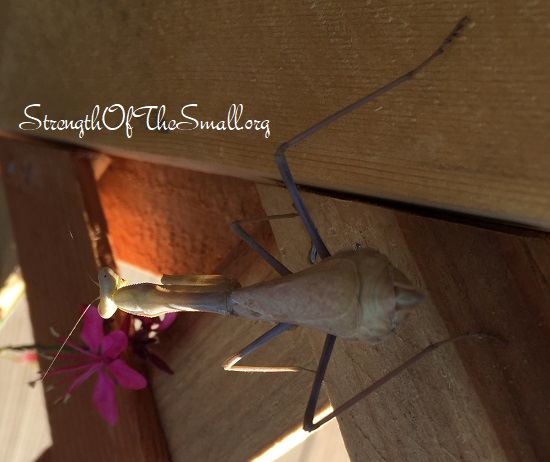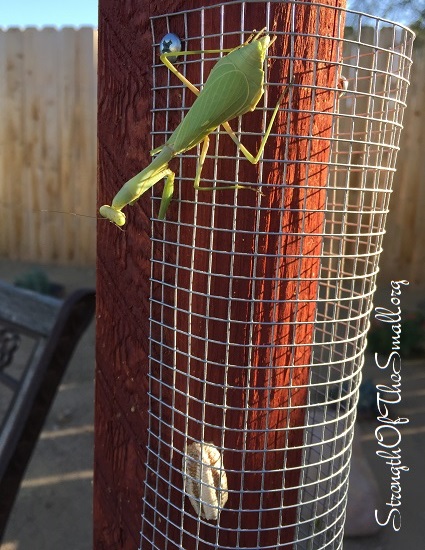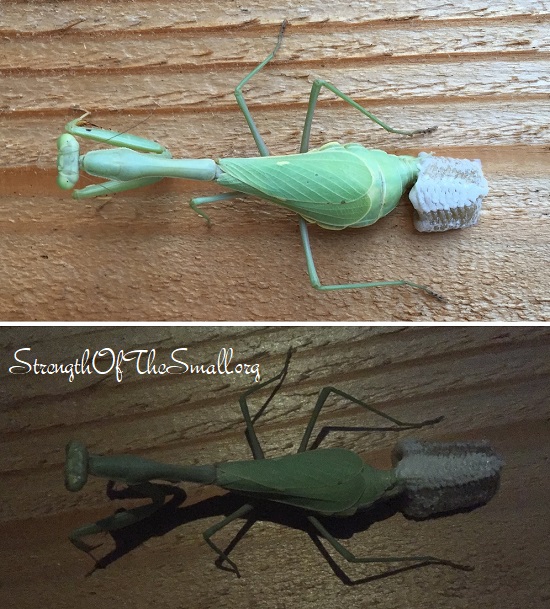Last October I wrote about the The Fascinating Life of Mantises and shared a video of a praying mantis laying eggs. We decided, early in the Spring, to get one ootheca (egg case) and observe it indoor until it hatches.
For this observation we used a jar, a dryer sheet and rubber band (to secure the opening of the jar), and a small branch from the Pomegranate tree. We placed a branch in the jar and gently stuck the egg case on one of the thorns of the branch so that it would be suspended and also, for the praying mantis nymphs to perch on once they emerge. The dryer sheet was a used one, very soft and breathable, allowing air to flow into, out of, and within the jar.
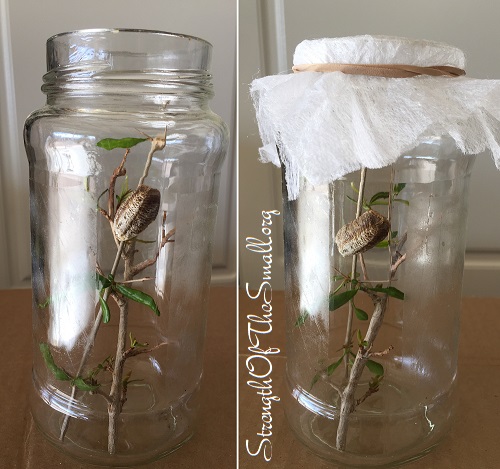
We had the egg case in a jar for about five weeks and watched with delight as nymphs emerged from the egg case last week.
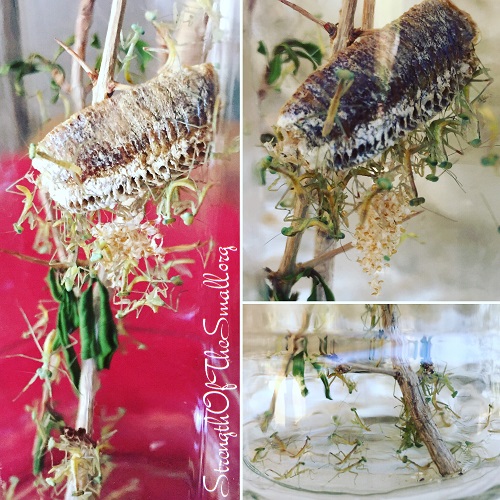
And no, young mantises do not eat one another as soon as they hatch. Not releasing them soon enough, however, will cause them themselves to become prey. We gently released them on the leaves of a rose bush, to start feeding on aphids and hide from predators.
